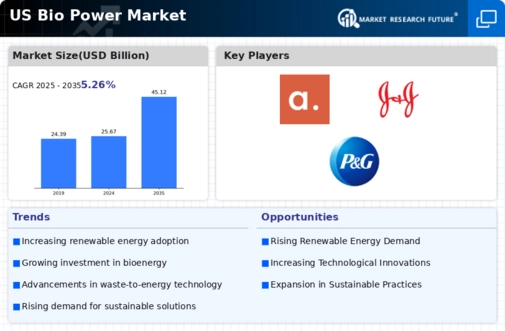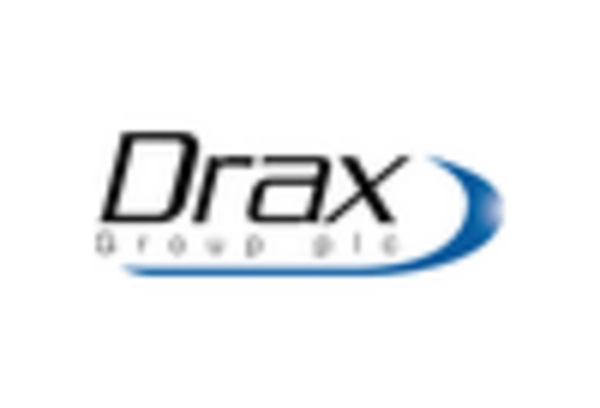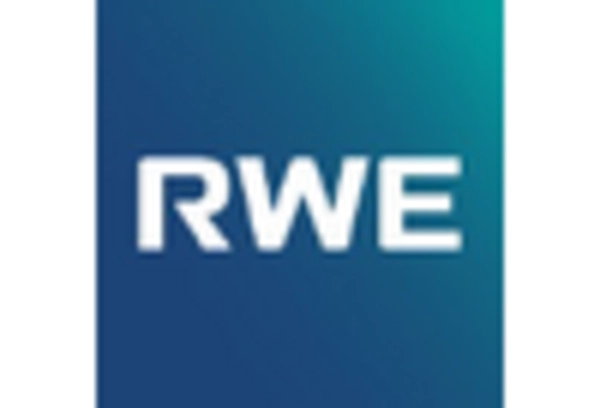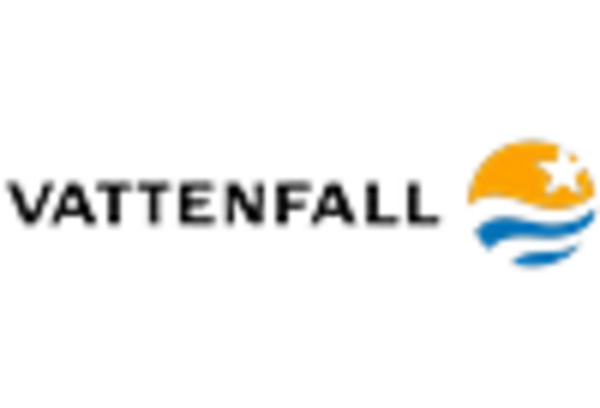Supportive Regulatory Frameworks
The bio power market is significantly influenced by supportive regulatory frameworks established by the US government. Policies aimed at promoting renewable energy, such as the Renewable Fuel Standard (RFS) and various state-level incentives, are encouraging the adoption of bio power technologies. These regulations not only provide financial support but also create a stable market environment for bio power producers. In 2025, it is estimated that federal and state incentives could contribute to a 15% increase in bio power generation capacity. This supportive landscape is essential for attracting investments and fostering innovation within the bio power market, ultimately leading to a more sustainable energy future.
Rising Demand for Renewable Energy
The bio power market is experiencing a notable surge in demand for renewable energy sources. This trend is driven by increasing awareness of climate change and the need for sustainable energy solutions. In the US, renewable energy consumption has risen significantly, with bioenergy accounting for approximately 5% of total energy consumption in 2025. This growing demand is likely to propel investments in bio power technologies, as stakeholders seek to meet renewable energy targets set by federal and state policies. Furthermore, the transition towards cleaner energy sources is expected to create new opportunities for bio power market players, enhancing their market presence and driving innovation in the sector.
Public Awareness and Consumer Preferences
Public awareness regarding environmental issues is shaping consumer preferences, thereby impacting the bio power market. As consumers become more conscious of their carbon footprints, there is a growing inclination towards energy sources that are perceived as environmentally friendly. This shift in consumer behavior is prompting businesses to adopt bio power solutions to meet the demand for sustainable energy. In 2025, surveys indicate that over 60% of consumers in the US prefer products and services powered by renewable energy. This trend is likely to encourage companies to invest in bio power technologies, aligning their operations with consumer expectations and contributing to the overall growth of the bio power market.
Advancements in Biomass Conversion Technologies
Technological innovations in biomass conversion processes are transforming the bio power market. Enhanced methods such as gasification and anaerobic digestion are improving the efficiency of converting biomass into energy. These advancements are crucial, as they can potentially increase the energy yield from feedstocks, making bio power more competitive with fossil fuels. In 2025, the US bio power market is projected to witness a growth rate of around 8% annually, largely attributed to these technological improvements. As companies invest in research and development, the bio power market is likely to benefit from more efficient and cost-effective energy production methods, further solidifying its role in the renewable energy landscape.
Increasing Investment in Sustainable Infrastructure
Investment in sustainable infrastructure is a key driver for the bio power market. As cities and states prioritize sustainability, there is a growing focus on developing facilities that utilize bioenergy. In 2025, investments in bio power infrastructure are expected to reach approximately $10 billion in the US, reflecting a commitment to renewable energy sources. This influx of capital is likely to enhance the operational capabilities of bio power plants, enabling them to produce energy more efficiently. Additionally, the establishment of new facilities will create jobs and stimulate local economies, further reinforcing the importance of bio power in the broader energy landscape.

















Leave a Comment